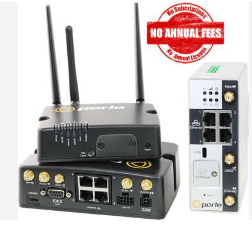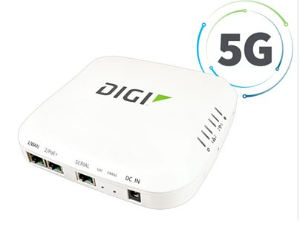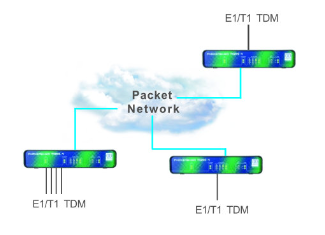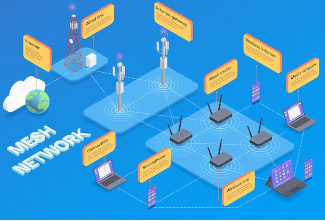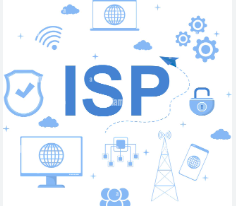Unleashing the Power of 100G Access Switch: Revolutionizing Network Connectivity
Introduction
In the world of modern networking, high-speed connectivity is a crucial factor in supporting the ever-increasing demands of data-intensive applications and services. The 100G access switch has emerged as a game-changer, offering unparalleled network performance and scalability. In this blog post, we will delve into the capabilities and advantages of the 100G access switch, exploring its significance in transforming network connectivity.

Understanding the 100G Access Switch
A power of 100G access switch refers to a network switch that supports data transmission at speeds of up to 100 gigabits per second (Gbps) per port. It is designed to provide high-speed connectivity and accommodate the bandwidth requirements of modern networks. The power of 100G access switch is widely used in data centers, service provider networks, and other environments where ultra-fast network connectivity is essential.
Key Features and Capabilities
- Lightning-Fast Speed: The primary advantage of a 100G access switch is its ability to handle massive amounts of data at ultra-high speeds. With 100 Gbps per port, it enables rapid data transfer, reducing latency and facilitating seamless network performance.
- Increased Bandwidth: The 100G access switch provides significantly higher bandwidth compared to its predecessors, allowing for the smooth transmission of data-intensive applications, such as high-definition video streaming, cloud computing, and virtualization.
- Scalability and Flexibility: These switches offer scalability, allowing network administrators to expand their network infrastructure effortlessly. The modular design of many 100G access switches enables the addition of new ports and interfaces to accommodate future growth and evolving network requirements.
- Advanced Traffic Management: 100G access switches often incorporate advanced traffic management features, such as Quality of Service (QoS), which prioritize critical traffic and ensure optimal performance for latency-sensitive applications.
- High Availability and Redundancy: To ensure uninterrupted network connectivity, 100G access switches typically include features like link aggregation, rapid spanning tree protocols, and redundant power supplies. These features contribute to a highly available and resilient network infrastructure.
Benefits of a 100G Access Switch
- Unmatched Network Performance: The high-speed capabilities of a 100G access switch significantly enhance network performance, allowing for faster data transfer and minimizing bottlenecks. This is particularly crucial in environments with high-bandwidth requirements, such as data centers and service provider networks.
- Enhanced User Experience: With its ability to handle large volumes of data at lightning-fast speeds, a 100G access switch ensures a seamless user experience by reducing latency and enabling faster response times for applications and services.
- Future-Proofing Network Infrastructure: Investing in a 100G access switch provides a level of future-proofing, as it offers the capacity to accommodate the increasing demand for higher bandwidth. Organizations can stay ahead of their networking needs and seamlessly scale their networks as data requirements grow.
- Streamlined Network Management: The high port density of a 100G access switch enables the consolidation and simplification of network infrastructure. By connecting multiple devices to a single switch, organizations can reduce complexity, minimize cabling, and streamline network management processes.
- Support for Bandwidth-Intensive Applications: The 100G access switch is designed to handle bandwidth-intensive applications, such as video streaming, cloud computing, and virtualization. It provides the necessary speed and capacity to support these applications seamlessly.
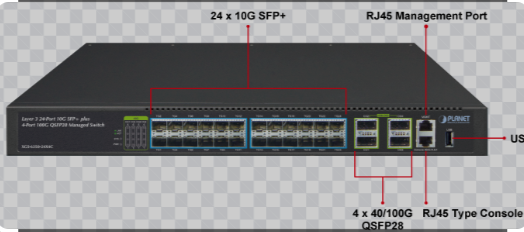
Conclusion
The 100G access switch represents a significant leap forward in network connectivity, delivering unmatched speed, scalability, and advanced traffic management capabilities. Its ability to handle large volumes of data at lightning-fast speeds makes it an indispensable tool for data centers, service provider networks, and other high-performance networking environments.
By deploying a 100G access switch, organizations can achieve unparalleled network performance, enhance user experience, and future-proof their network infrastructure. These switches enable seamless connectivity, efficient data transfer, and the support of bandwidth-intensive applications.
As data requirements continue to grow and technology evolves, the 100G access switch will play a critical role in meeting the demands of modern networks. Its ability to provide ultra-fast connectivity and accommodate the ever-increasing bandwidth needs positions it as an essential component for organizations seeking to optimize their network infrastructure and drive innovation in the digital age.

